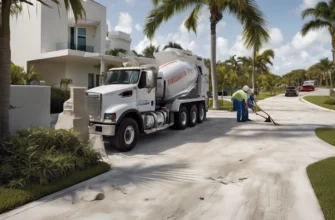- Affordable Plumbing Repairs in Miami’s Vicinity: Cost Analysis & Insights
- Cost Analysis: Affordable Plumbing Repairs in Miami’s Vicinity
- Cost Range: How Much Should You Expect to Pay?
- Florida Pricing: Factors Affecting the Cost of Plumbing Repairs
- Material Costs: Determining the Expenses for the Job
- Material Quantity: Estimating Needs Based on Job Size
- Timeframe: How Long Will the Repairs Take?
- Essential Tools: Professional Equipment for Plumbing Repairs
- Step-by-Step Process: Proper Execution and Common Mistakes
Affordable Plumbing Repairs in Miami’s Vicinity: Cost Analysis & Insights
When it comes to plumbing repairs in Miami and its surrounding cities, it’s important to understand the cost analysis and factors affecting the pricing. This article aims to provide insights into affordable plumbing repairs, including the cost range, material costs, timeframe, essential tools, and a step-by-step process. By understanding these aspects, you can make informed decisions and ensure a smooth plumbing repair experience.
Cost Analysis: Affordable Plumbing Repairs in Miami’s Vicinity
Before diving into the specific cost range, it’s important to note that affordability is a relative term. However, in the context of plumbing repairs, it refers to services that are reasonably priced without compromising on quality. In Miami’s vicinity, there are several factors that contribute to affordable plumbing repairs, including competition among service providers, availability of materials, and the local economy.
Cost Range: How Much Should You Expect to Pay?
The cost of plumbing repairs can vary depending on the complexity of the issue, the extent of the damage, and the specific services required. To give you a rough estimate, here is a cost range for common plumbing repairs in Miami’s vicinity:
| Plumbing Repair | Cost Range (USD) |
|---|---|
| Faucet Replacement | $100 – $300 |
| Toilet Repair | $150 – $400 |
| Pipe Leak Fix | $200 – $600 |
| Water Heater Installation | $500 – $1,000 |
| Drain Cleaning | $150 – $500 |
| Sewer Line Repair | $1,000 – $5,000 |
Keep in mind that these are approximate costs and may vary depending on the specific circumstances and service provider. It’s always recommended to get multiple quotes from reputable plumbing companies to ensure you are getting the best value for your money.
Florida Pricing: Factors Affecting the Cost of Plumbing Repairs
Florida, and specifically Miami, has its own set of factors that can influence the pricing of plumbing repairs. Some of these factors include:
- Geographical Location: Miami’s coastal location and the high-water table can make plumbing repairs more complex, particularly when dealing with issues such as flooding or saltwater intrusion. These factors can contribute to slightly higher costs.
- Permitting and Code Compliance: Florida has strict building codes and permitting requirements, ensuring the safety and integrity of plumbing systems. Compliance with these codes can add to the overall cost of repairs, as licensed professionals are required to adhere to these regulations.
- Cost of Living: Miami is known for its higher cost of living compared to other cities in the state. This can impact the pricing of plumbing repairs as service providers need to cover their overhead expenses, including labor, insurance, and equipment costs.
Understanding these factors can help you better assess the cost estimates provided by plumbing companies and make an informed decision.
Material Costs: Determining the Expenses for the Job
The cost of materials is another crucial aspect to consider when analyzing the overall expense of plumbing repairs. The specific materials required will vary depending on the nature of the repair, but here are some common ones:
| Material | Average Cost (USD) |
|---|---|
| Pipes | $2 – $10 per foot |
| Faucets | $50 – $200 |
| Toilets | $100 – $800 |
| Water Heaters | $300 – $1,500 |
| Drain Cleaning Solutions | $10 – $20 per bottle |
| Valves | $10 – $50 |
It’s important to note that these costs are approximate and can vary depending on the brand, quality, and specific requirements of the repair job. Additionally, labor costs should be taken into account, as some plumbing companies may include material costs in their overall pricing, while others may charge separately for materials.
Material Quantity: Estimating Needs Based on Job Size
Estimating the quantity of materials required for a plumbing repair can help you better understand the overall cost and ensure efficient planning. Here are some factors to consider when estimating material needs:
- Pipe Lengths: Measure the length of pipes required for the repair, accounting for any bends or turns. Add a few extra feet to account for any unexpected changes during the installation process.
- Fixture Units: Determine the number of fixture units (FUs) in your plumbing system to estimate the number of valves, faucets, and other components you’ll need.
- Water Heater Capacity: Consider the size and capacity of the water heater if you’re planning to install or replace one. Choose a capacity that suits your household’s needs to avoid unnecessary expenses.
By accurately estimating material needs, you can avoid overbuying or underbuying, helping to keep your plumbing repair costs within a reasonable range.
Timeframe: How Long Will the Repairs Take?
The timeframe for plumbing repairs can vary depending on the complexity of the issue, availability of materials, and the service provider’s schedule. Here’s a general idea of the timeframes for common plumbing repairs:
| Plumbing Repair | Timeframe |
|---|---|
| Faucet Replacement | 1 – 2 hours |
| Toilet Repair | 2 – 3 hours |
| Pipe Leak Fix | 4 – 6 hours |
| Water Heater Installation | 4 – 8 hours |
| Drain Cleaning | 1 – 2 hours |
| Sewer Line Repair | 1 – 3 days |
It’s important to note that these timeframes are approximate and can vary depending on the specific circumstances of each repair job. Additionally, certain repairs may require additional time for inspections or permit approvals. It’s recommended to discuss the estimated timeframe with your chosen plumbing company to ensure your expectations align.
Essential Tools: Professional Equipment for Plumbing Repairs
To provide efficient and high-quality plumbing repairs, professionals rely on a range of specialized tools and equipment. Here are some essential tools commonly used in plumbing repairs:
| Tool | Purpose |
|---|---|
| Pipe Wrench | Gripping and turning pipes and fittings |
| Plunger | Clearing clogged drains and toilets |
| Pipe Cutter | Cutting pipes to desired lengths |
| Pipe Threader | Creating threaded connections for pipes |
| Drain Snake | Removing debris from drains and pipes |
| Auger | Clearing stubborn clogs in toilets and drains |
| Leak Detection Equipment | Locating and identifying hidden leaks |
These are just a few examples of the tools used by professional plumbers. Depending on the specific repair job, additional tools, such as soldering equipment for pipe joints or specialized camera systems for inspecting sewer lines, may be required. By utilizing the right tools, plumbers can ensure accurate repairs and minimize the risk of further issues.
Step-by-Step Process: Proper Execution and Common Mistakes
To provide transparency and help homeowners understand the process, here is a step-by-step guide to proper execution of plumbing repairs:
- Assessment and Diagnosis: A professional plumber will start by assessing the issue and diagnosing the root cause. They will inspect the affected area, identify any potential underlying problems, and provide an estimate for the repair.
- Material Procurement: Once the assessment is complete, the plumber will gather the necessary materials and equipment for the repair. This may involve purchasing new fixtures, pipes, valves, or other components.
- Preparation and Shutdown: Before starting the repair, the plumber will ensure the water supply is shut off to prevent any further damage or flooding. They will also prepare the work area by removing any obstacles or fixtures that may hinder the repair process.
- Repair Execution: The plumber will proceed with the repair, following industry best practices and adhering to local building codes. This may involve replacing damaged pipes, installing new fixtures, or fixing leaks.
- Testing and Inspection: After completing the repair, the plumber will test the system to ensure everything is functioning properly. They may perform pressure tests, check for leaks, or inspect the overall performance of the repaired area.
- Clean-up and Restoration: Once the repair passes all necessary tests, the plumber will clean up the work area and restore any fixtures or areas that were temporarily removed. This includes reassembling toilets, faucets, or other components that were disconnected during the repair process.
While professional plumbers strive to provide accurate and efficient repairs, there are some common mistakes that can occur. These may include improper installation of fixtures, inadequate leak detection, or using incorrect materials for specific applications. To avoid such mistakes, it’s crucial to hire licensed and reputable plumbing companies that have experience and expertise in handling various plumbing repairs.
In conclusion, when seeking affordable plumbing repairs in Miami’s vicinity, it’s important to consider the cost analysis, factors affecting pricing, material costs, timeframe, essential tools, and the step-by-step process. By understanding these aspects, homeowners can make informed decisions, budget accordingly, and ensure they receive high-quality plumbing services. Remember to obtain multiple quotes, choose licensed professionals, and communicate your expectations clearly to ensure a successful plumbing repair experience.







